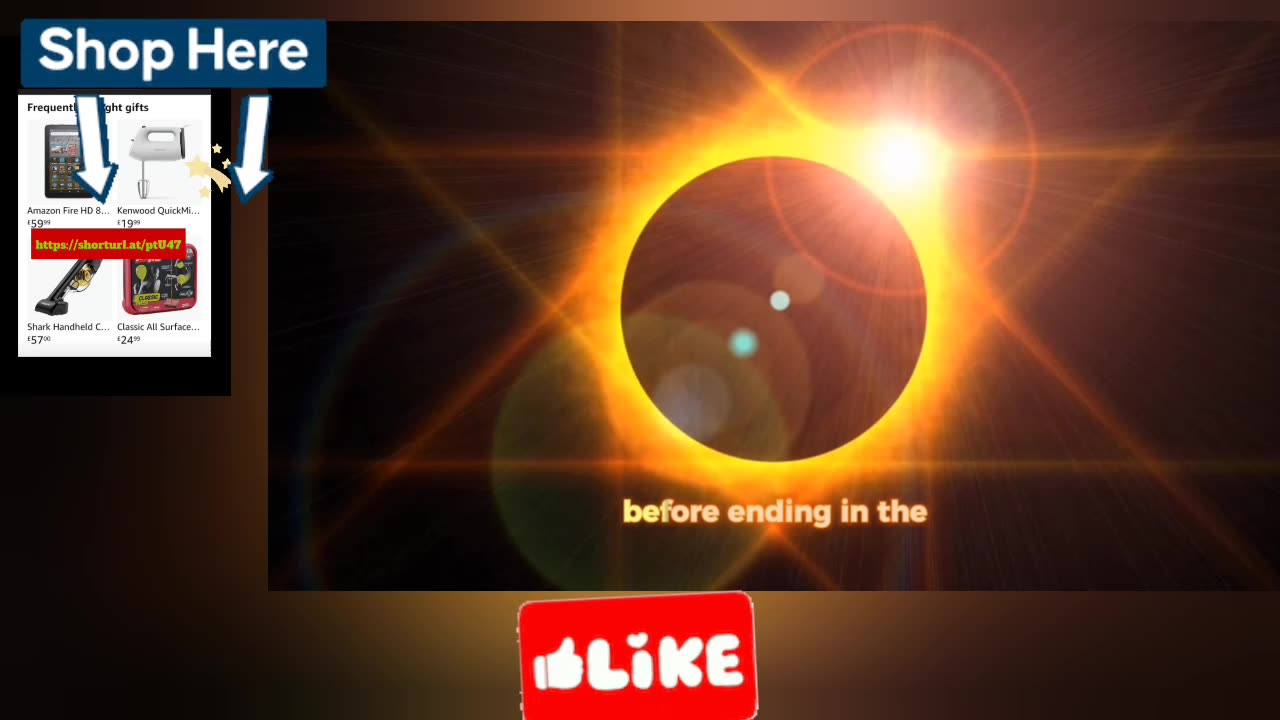Premium Only Content

How solar eclipse on 8 April 2024
A total solar eclipse will take place on Monday, April 8, 2024, visible across North America and dubbed the Great North American Eclipse by some media.[1][2][3] A solar eclipse occurs when the Moon passes between Earth and the Sun, thereby obscuring the image of the Sun for a viewer on Earth. A total solar eclipse occurs when the Moon's apparent diameter is larger than the Sun's, blocking all direct sunlight, turning day into darkness. Totality occurs only in a narrow path across Earth's surface, with the partial solar eclipse visible over a surrounding region thousands of kilometers wide.
Occurring only one day after perigee (perigee on Sunday, April 7, 2024), the Moon's apparent diameter will be 5.5% larger than average. With a magnitude of 1.0566, its longest duration of totality will be of 4 minutes and 28.13 seconds near the Mexican town of Nazas, Durango, (about 4 mi (6 km) north), and the nearby city of Torreón, Coahuila.
This eclipse will be the first total solar eclipse to be visible in the provinces of Canada since February 26, 1979,[4][5] the first in Mexico since July 11, 1991,[6] and the first in the United States since August 21, 2017. It will be the only total solar eclipse in the 21st century where totality will be visible in Mexico, the U.S., and Canada.[7] It will also be the last total solar eclipse visible in the contiguous United States until August 23, 2044.
The final solar eclipse of the year will occur six months later, on October 2, 2024.
The totality of the solar eclipse will be visible in a narrow strip on the Pacific Ocean passing 230 miles (370 km) north of the Marquesas Islands and later in North America, beginning at the Pacific coast, then ascending in a northeasterly direction through Mexico, the United States, and Canada, before ending in the Atlantic Ocean
April is a month of changeable weather along the eclipse path. The weather in Mexico and the southern United States include afternoon convective buildups, whereas northern regions are still immersed in late winter and early spring weather, with passing low-pressure disturbances (e.g., rain, snow). Of these disturbances, eclipse-day cloud cover is most likely, unless severe storms are present across the south or spring storms with blizzard-like conditions are passing in the north. Cloud patterns are simple: lowest average cloud coverage occur in the south, particularly in Mexico, whereas the highest amounts of coverage crop up in the northeastern United States and Canada.
The path of the April 8, 2024 eclipse will cross the path of the prior total solar eclipse of August 21, 2017, with the intersection of the two paths being in southern Illinois, in Makanda, just south of Carbondale.[30] The cities of Benton, Carbondale, Chester, Harrisburg, Marion, and Metropolis in Illinois; Cape Girardeau, Farmington, and Perryville in Missouri, as well as Paducah, Kentucky, will be within a roughly 9,000-square-mile (23,000 km2) intersection of the paths of totality of both the 2017 and 2024 eclipses.
-
 LIVE
LIVE
GritsGG
29 minutes agoWin Streaking! Most Wins 3435+ 🧠
48 watching -
 LIVE
LIVE
Welcome to the Rebellion Podcast
19 hours agoMonday Funday - WTTR Podcast Live 8/25
383 watching -
 LIVE
LIVE
Game On!
15 hours ago $0.02 earnedTom Brady And The Las Vegas Raiders ARE BACK! 2025 NFL Preview!
2,858 watching -
 LIVE
LIVE
The Bubba Army
2 days agoShould RaJa Jackson Be Arrested? - Bubba the Love Sponge® Show | 8/25/25
2,236 watching -
 LIVE
LIVE
FyrBorne
14 hours ago🔴Warzone M&K Sniping: Builds So Strong They Think I'm Hacking
302 watching -
 LIVE
LIVE
BEK TV
2 days agoTrent Loos in the Morning - 8/25/2025
907 watching -
 4:23
4:23
Blackstone Griddles
16 hours agoEasy Salmon Dinner on the Blackstone Griddle
36K1 -
 8:10
8:10
WhaddoYouMeme
1 day ago $0.08 earnedChristians, Before You See “Testament”, Watch this!
13.5K5 -
 8:42
8:42
Freedom Frontline
15 hours agoDurbin’s Trump Smear Video Just HUMILIATED Him in the Senate
20K6 -
 10:56
10:56
ariellescarcella
13 hours agoThe Shocking Divide Among College Voters Sparks Worry For America
14.6K7